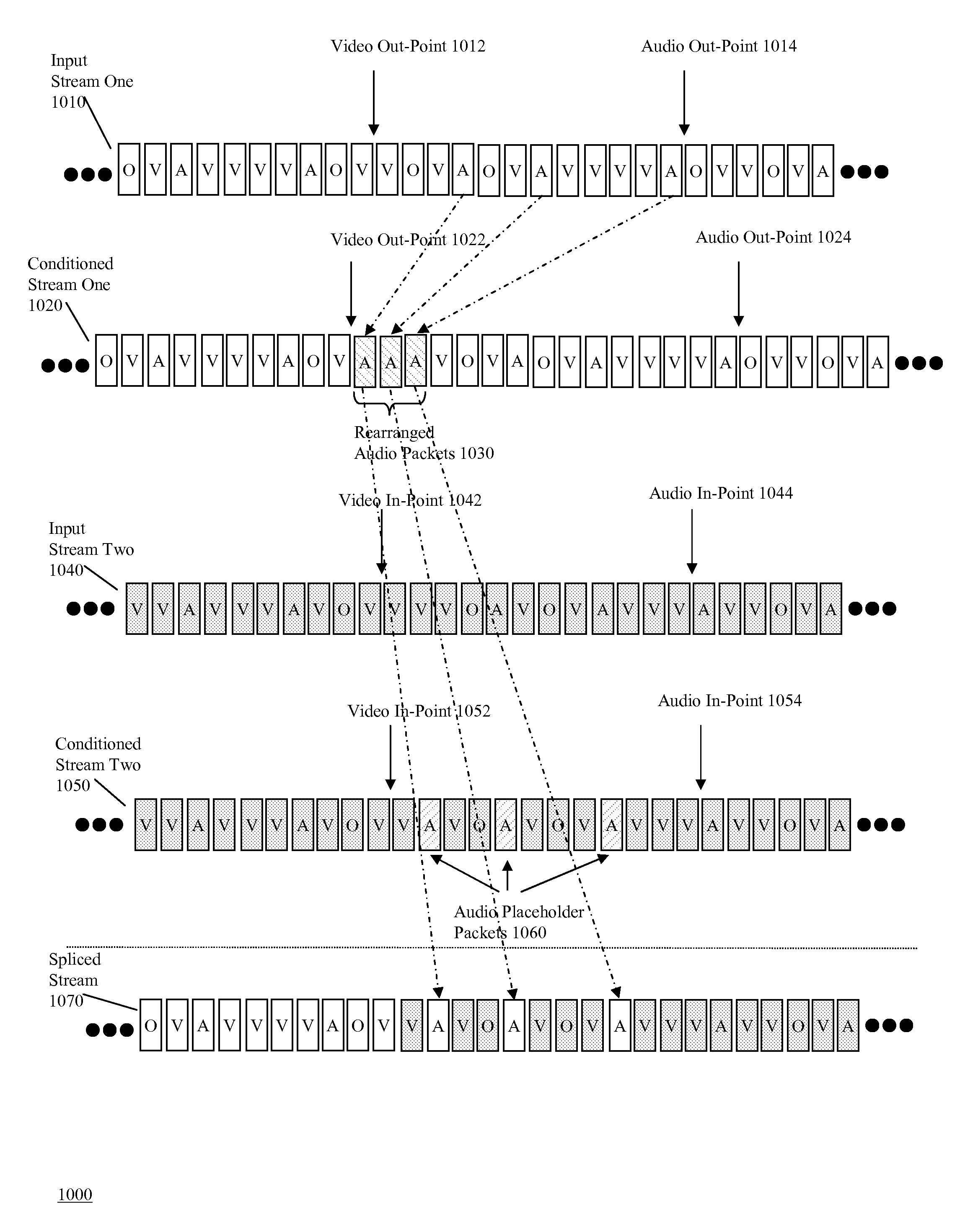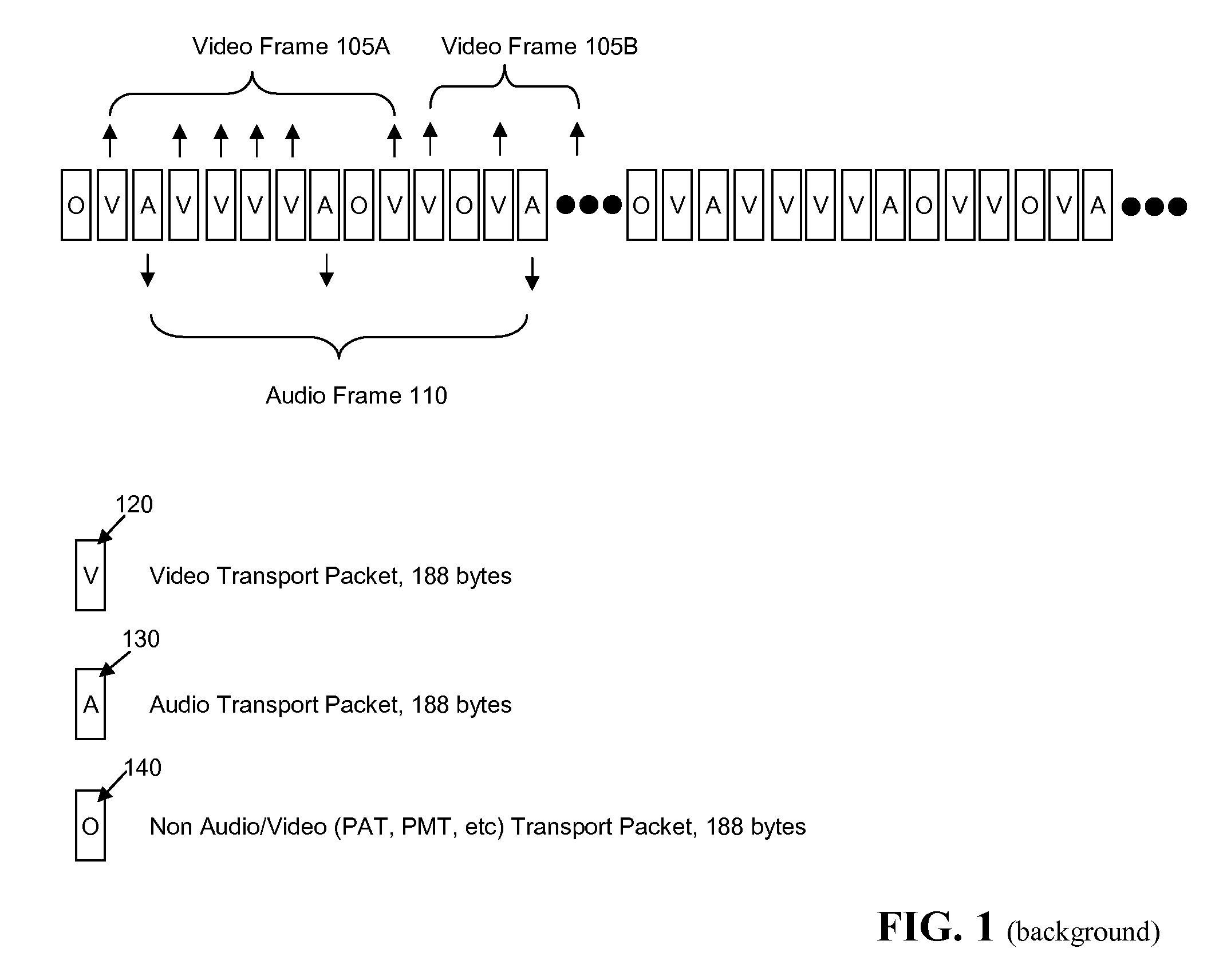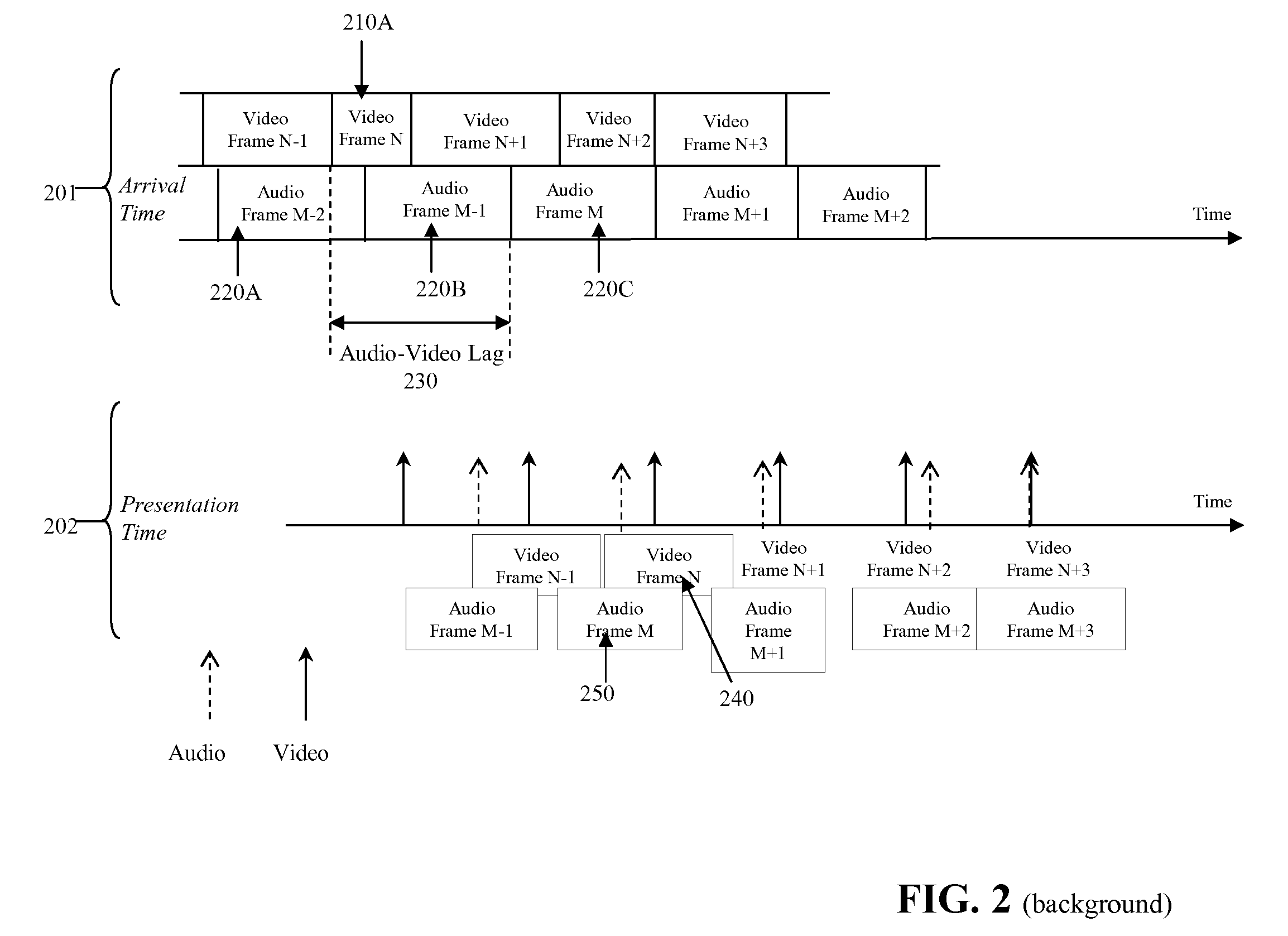Scalable seamless digital video stream splicing
a seamless, video stream technology, applied in the field of computer-based methods and apparatuses, can solve the problems of long-lasting glitches, underflow represents lost time, and video stream splicing problems, and achieve the effects of high-quality splicing, simple playlisting, and high-volume video stream splicing
- Summary
- Abstract
- Description
- Claims
- Application Information
AI Technical Summary
Benefits of technology
Problems solved by technology
Method used
Image
Examples
Embodiment Construction
[0042]In general overview, the described methods and apparatuses are for scalable seamless digital video stream splicing. FIG. 6 is an overview diagram of an exemplary system architecture 600 for scalable seamless digital video stream splicing. In FIG. 6, the system architecture 600 consists of two video sources (e.g., Video Source One 601a and Video Source Two 601b). The video sources 601a-b are connected to the splicer 620 over a communication network (not shown) and transmit individual video streams (e.g., Video Stream One 605a and Video Stream Two 605b) to the splicer 620. After processing the streams 605a-b as described in detail below, the splicer 620 transmits a spliced stream 630 over a communication network to a decoder 640.
[0043]FIG. 7 is a flowchart of an exemplary method 700 for scalable seamless digital video stream splicing. The first and second video streams 605a-b are received (710) by the splicer 620. Data packets in the first video stream 605a are rearranged (720) ...
PUM
 Login to View More
Login to View More Abstract
Description
Claims
Application Information
 Login to View More
Login to View More - R&D
- Intellectual Property
- Life Sciences
- Materials
- Tech Scout
- Unparalleled Data Quality
- Higher Quality Content
- 60% Fewer Hallucinations
Browse by: Latest US Patents, China's latest patents, Technical Efficacy Thesaurus, Application Domain, Technology Topic, Popular Technical Reports.
© 2025 PatSnap. All rights reserved.Legal|Privacy policy|Modern Slavery Act Transparency Statement|Sitemap|About US| Contact US: help@patsnap.com



